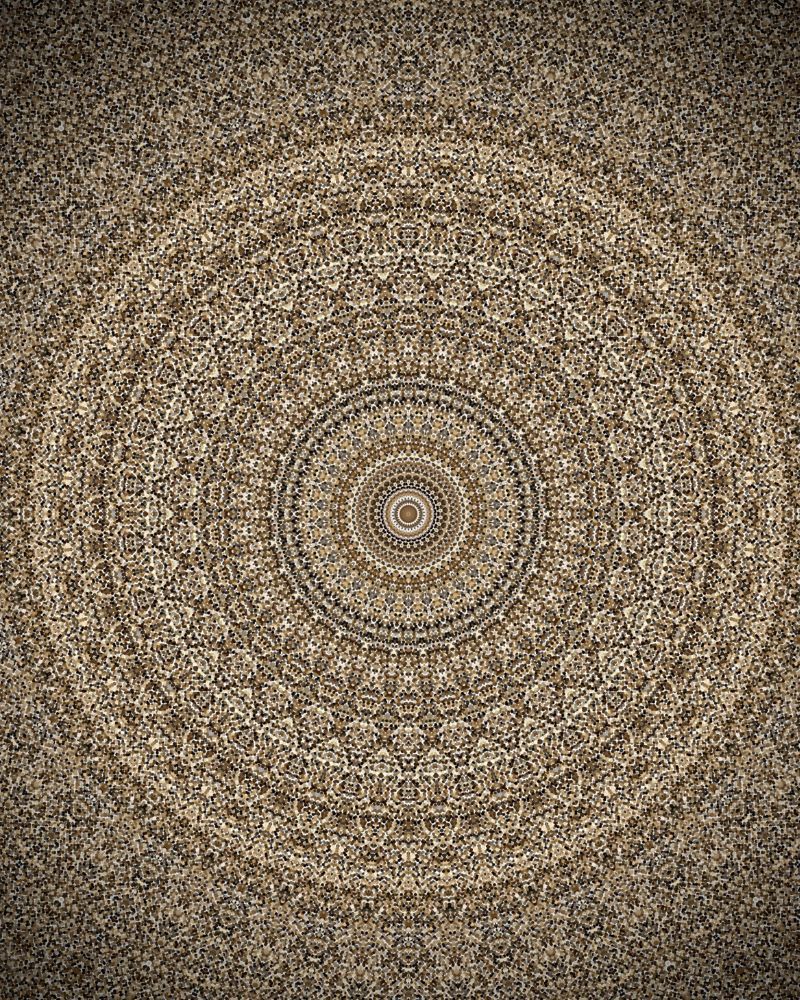Mandala Art : A mesmerising fusion of symmetry and spirituality

Mandala art, with its mesmerizing circular patterns and intricate details, is more than just a beautiful visual form—it has the power to transform spaces and influence emotions. Rooted in ancient spiritual traditions, mandalas symbolize balance, harmony, and unity. Whether used in home décor, workplaces, or therapeutic settings, mandalas create a positive environment by promoting relaxation, focus, and emotional well-being.
Here’s how mandala art can contribute to a peaceful and uplifting atmosphere in different aspects of life.
1. Promotes Calmness and Reduces Stress
One of the most well-known benefits of mandala art is its ability to soothe the mind. The repetitive patterns and symmetrical designs naturally draw attention inward, encouraging mindfulness and relaxation. Coloring or creating mandalas has been shown to reduce anxiety and promote a meditative state, making it an effective tool for stress relief.
2. Enhances Focus and Concentration
Mandalas require intricate detailing, which engages the brain in a focused activity. Whether drawing, coloring, or simply observing mandalas, this practice helps improve concentration and attention span. It is especially beneficial in learning environments, workplaces, and meditation spaces, where clarity and focus are essential.
3. Creates a Sense of Harmony and Balance
The circular structure of mandalas represents unity and wholeness, mirroring the natural cycles of life. Having mandala art in a room—whether in the form of paintings, wall hangings, or decorations—brings a sense of order and tranquility. This balance is particularly useful in places where emotional stability and peace are needed, such as yoga studios, therapy rooms, and meditation centers.
4. Encourages Emotional Healing
Art therapy has long been used for emotional healing, and mandalas play a significant role in this practice. Engaging with mandala art helps individuals process emotions, release negative thoughts, and cultivate a sense of inner peace. Many therapists use mandalas to help patients express their feelings and achieve a deeper understanding of themselves.
5. Stimulates Creativity and Self-Expression
Mandala art is a powerful tool for creativity, allowing individuals to explore different colors, patterns, and designs. Engaging with mandalas encourages self-expression, which can be particularly beneficial for those struggling with self-doubt or creative blocks. By designing their own mandalas, people can channel their emotions into art and discover new aspects of themselves.
6. Elevates the Energy of a Space
In many cultures, mandalas are believed to have spiritual energy that enhances the vibrancy of a space. They are often used in Feng Shui and Vastu Shastra to attract positive energy and harmony. Hanging a mandala painting or using mandala-inspired décor can uplift the energy of a room, making it feel more welcoming and peaceful.
7. Aids in Meditation and Mindfulness Practices
Mandalas have long been used as meditation tools in spiritual traditions, particularly in Hinduism and Buddhism. Gazing at a mandala or coloring one can help quiet the mind, making it easier to enter a meditative state. This practice enhances self-awareness, promotes mindfulness, and deepens spiritual connection.
8. Encourages a Positive Mindset
Colors and patterns in mandala art influence emotions. Vibrant and harmonious mandala designs can uplift mood, inspire positivity, and encourage a more optimistic outlook on life. Incorporating mandalas in daily life—whether through art, textiles, or digital designs—can serve as a constant reminder to stay centered and embrace positivity.
Mandala art is more than just an aesthetic element; it is a powerful tool for creating a positive environment. Whether used for relaxation, focus, emotional healing, or meditation, mandalas bring a sense of peace and balance to any space. By integrating mandala art into your surroundings, you can cultivate a more harmonious, inspiring, and uplifting atmosphere, benefiting both the mind and the soul.